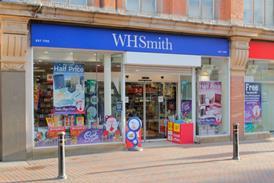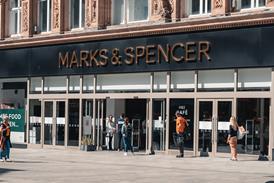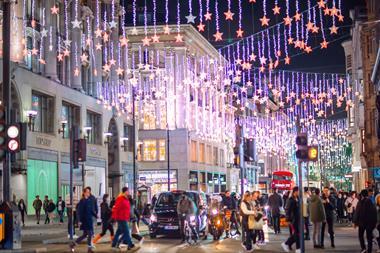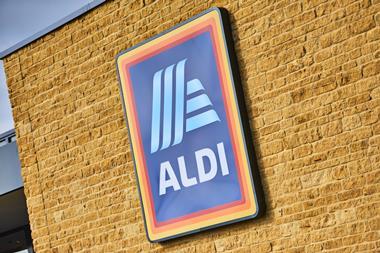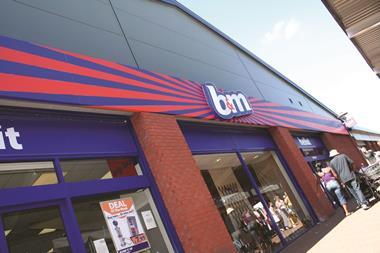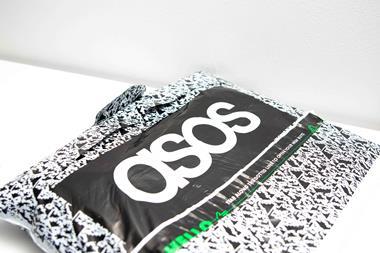PROMOTIONAL RESEARCH
With Christmas 2021 now over, Retail Week unpacks the key consumer trends and asks what they could mean for the golden quarter in 2022.

Many of the retail trends evident in the final quarter of 2021 will feature prominently in the year ahead and be fully established by the time 2022’s qolden quarter arrives, according to several industry experts.
The KPMG/Ipsos Retail Think Tank (RTT), comprising retail specialists from consultancies, banks and research houses, predicts that 2022 will bring an “inflection point” for channel shift, demanding retailers converge online and physical shopping.
The environmental, social and governance (ESG) agenda is also forecast to start delivering meaningful change as cost and efficiency benefits are embraced, too.
However, the think tank adds that inflation will hold back consumer spending, with Next CEO Lord Wolfson also expressing concern about how rising inflation levels combined with necessary product price rises will impact the shopper in the year ahead.
It is unclear if pent-up demand and savings made during the pandemic are still to be spent, have already contributed to a buoyant end to 2021 or will be directed towards travel and other leisure pursuits in 2022, Wolfson continues.
The true impact of tax and interest rate rises is still also to be seen, he argues, adding: “Clear answers to these questions are impossible at this stage, but they all point to a tougher environment as we move through next year.”
Looking at 2021 to learn for 2022
As the Next chief executive implies, it is difficult to gauge which recent trends are here to stay. But amid the uncertainty, there are some prevailing patterns that seem sure to persist.
In terms of peak period, Black Friday is no longer solely a day or weekend event. Both British Retail Consortium (BRC) and IMRG data show that it is a multiple-week affair, with retailers meeting consumer expectations via deals and discounts throughout November.
Helen Dickinson, chief executive of the BRC, says: “While Christmas may or may not be getting earlier every year, Black Friday certainly is.
“The American holiday has now become a month-long affair in the UK, with deals spread over a longer period than ever before.”
She also acknowledges that with high sales of discounted clothing the focus of Black Friday has clearly shifted from just electronics and household appliances.
Data from Criteo supports that theory. Ryan Cook, UK managing director of the ad tech company, says: “We noted several spikes in the luxury goods market – such as a staggering 405% jump in jewellery purchases on Black Friday.
“This year also saw transactions soar in resurgent categories like travel.”
BRC-KPMG data shows that by November 2021 ecommerce was accounting for almost half of all non-food spend in the UK, highlighting its more dominant presence on overall UK retail sales compared with before the pandemic.
“Ecommerce’s overall share will increase from around 27% to 28% by the year-end and online grocery will account for around 17% of total grocery sales”
Martin Newman, KPMG/Ipsos Retail Think Tank
Martin Newman, a retail consultant and RTT member, predicts online sales growth will continue in 2022 “but at lower rates than in 2020 and early 2021”.
“Ecommerce’s overall share of retail sales will increase from around 27% to 28% by the year-end and online grocery will account for around 17% of total grocery sales,” he says.
Anxiety and uncertainty among consumers related to the pandemic and the economy are expected to be a continuing trend, leading to softened demand in the first few months of the year.
It was a similar story in 2021, but that ended with a sales splurge in the final quarter of the year. Next’s sales in the eight weeks to December 25, 2021, for example, rose 20% compared with the same period pre-pandemic and were £70m higher than it had forecast.
Maureen Hinton, group research director at GlobalData Retail and an RTT member, says: “The pandemic has led to a shift in consumer behaviour and this, in turn, has driven growth in new channels and routes to market – such as direct-to-consumer and marketplaces creating new opportunities for retailers online.”
Next is one of those retailers taking advantage of these new models, as are Made, Joules and Decathlon, who are all continuing to build out their fledgling online marketplace offerings.
A matter of category
Grocery’s ability to stand up in a stormy environment was clear to see in 2021, according to Kantar sales figures released in the first week of 2022.
Take-home grocery sales hit £31.7bn for the 12 weeks to December 26, 2021, and £11.7bn in the month of December alone as customers seized on the chance to enjoy Christmas with friends and family, despite fears over the Covid-19 Omicron variant.
Overall grocery sales for the period were down 3% compared with the record figures reported in 2020, but Kantar said sales were up 8% on pre-pandemic spending levels, highlighting the continued robustness of the sector during the golden quarter.
Sub-trends within grocery include the growth of items related to dietary trends, such as meat-free ranges. Kantar reported that sales of chilled vegetarian ranges jumped by 6% and frozen equivalents increased by 4% year on year in the 12-week period.
Other categories that look set to drive sales for retailers in 2022 include those aligned with new pandemic-induced trends, which include more time spent at home amid hybrid working patterns.
Shoppers spent 47% and 10% more on streaming subscriptions and electronics during 2021 respectively, according to Barclaycard, while spending with vet and pet retailers rose 29%.
“Hybrid working will result in more discretionary spend being spent on the home and garden and outdoor and leisure pursuits, so the size of each of those segments will grow on pre-Covid figures”
James Sawley, HSBC
James Sawley, head of retail and leisure at HSBC UK, believes the shift to hybrid working will have a positive impact on several retail categories in 2022 and beyond.
“Hybrid working isn’t going away and, whether that means working from home one day or two days a week, consumers will be spending on average circa 15% to 30% more time at home,” he explains in his role as an RTT member.
“This, I suspect unsurprisingly, will result in more discretionary spend being spent on the home and garden and outdoor and leisure pursuits, so fundamentally the market size of each of those segments will grow on pre-Covid figures.
“The same rationale applies to grocery – more time being spent at home equals less money being spent out of the home or at work.
“Similar logic dictates that the pet food, accessories and care segment has changed for the foreseeable future – cats and dogs aren’t just for Covid.”
In terms of the specific location where shoppers will spend money during the peak period of 2022, retailers should ensure they are covering all bases. Online may have grown, but it is only part of the picture for a thriving retail operation.
Reduced footfall figures reported by the BRC and other indices in the immediate weeks around Christmas are “an exaggeration of the true trend” according to Cook.
“Brands shouldn’t be too hasty to discount the role the high street still plays in the lifetime value of customers,” he argues.
“Studies have shown that the more channels a customer interacts with, whether offline or online, the more they’ll spend with the business.
“It’s also important to bear in mind that sales – post-Christmas sales in particular – are merely the final point in an often long and winding path to purchase that begins several weeks beforehand.
“For instance, the average Black Friday shopper began browsing for their purchase item up to 15 days prior. The tactile experiences offered in store are still a pivotal part of the consideration phase in many product categories.”
- For more news and analysis on the 2021 golden quarter, visit retail-week.com/golden-quarter

Watch Retail Week’s Golden Quarter Masterclass on demand
The content includes:
Welcome from Retail Week Head of Commercial Content Nicola Harrison
Panel discussion: A supply chain nightmare before Christmas
We’ve all seen the headlines. Retail supply chains are groaning under the pressure of delivering sky-high volumes of online orders to consumers’ homes and the requirement to get products into store networks around the country without the delivery drivers to meet the demand.
Meanwhile, the complexity around imports and exports as a result of Brexit means more paperwork, time and money. How can retailers keep their supply chains running and get product in, out to stores and into the hands of customers wherever and whenever they want to receive it?
Speakers:
- Jeremy Cobbold, Chief Supply Chain and Planning Officer, The Entertainer
- David James, Group Supply Chain Director, Boohoo Group
- Sean Wallis, Supply Chain Director, The Perfume Shop
- Vincent Barnes, Industry and Solution Strategy Director – Fashion Retail, Infor
An audience with The Very Group
The Very Group’s Electrical Category Director Victoria Aldrich talks about how to win this festive season.
One month into the golden quarter, Retail Week spoke to Aldrich about the trends she had already seen, strategic insights and what Very was anticipating for the remainder of the peak season.
Aldrich also talked about the prevailing changes in consumer behaviour from the past two years and what this has meant for The Very Group’s strategy and investments. With one eye on the future, she explained how she expects the golden quarter period to evolve in years to come.
Speakers:
- Victoria Aldrich, Electrical Category Director, The Very Group
- James Knowles, Head of Content Innovation, Retail Week








